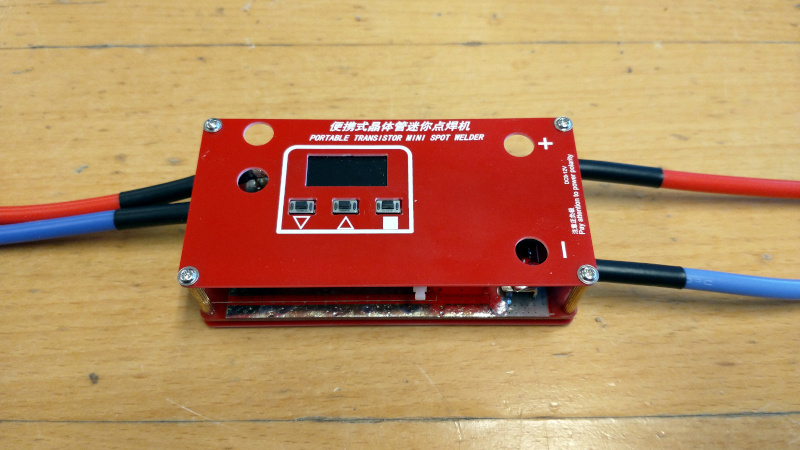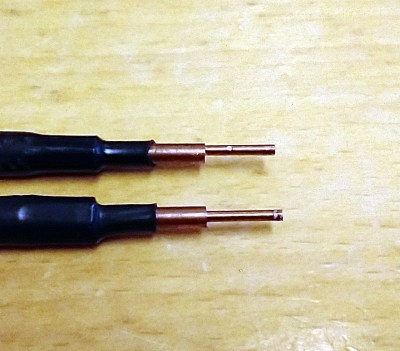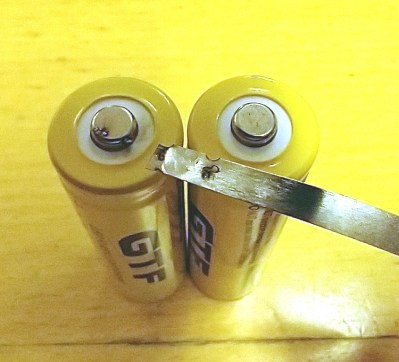Review: Battery Spot Welders, Why You Should Buy A Proper Spot Welder

Making battery packs is a common pursuit in our community, involving spot-welding nickel strips to the terminals on individual cells. Many a pack has been made in this way, using reclaimed 18650 cells taken from discarded laptops. Commercial battery spot welders do a good job but have a huge inrush current and aren’t cheap, so it’s not uncommon to see improvised solutions such as rewound transformers taken out of microwave ovens. There’s another possibility though, in the form of cheap modules that promise the same results using a battery pack as a power supply.
With a love of putting the cheaper end of the global electronic marketplace through its paces for the entertainment of Hackaday readers I couldn’t resist, so I parted with £15 (about $20), for a “Mini Spot Welder”, and sat down to wait for the mailman to bring me the usual anonymous grey package.
This Welder Promises much…

What arrived seemed promising, a “Portable Transistor Mini Spot Welder” along with a pair of battery cables and some cables terminated with spot welding electrodes.
The module itself is a sandwich of PCBs on metal standoffs, with a main board holding power electronics and a daughterboard with part-number-sanded microcontroller and small OLED display. There are some control buttons and a power switch on the board along with a socket for a foot pedal, and the main board has screw terminals, a row of hefty MOSFETs, and a large electrolytic capacitor.
Along with the unit was a set of leads, the welding leads being terminated in a set of insulated except for their tip copper probes and the battery leads being unterminated. I fitted a pair of crimp eye connectors to fit my battery terminals. Also in the box was a piece of paper advising on the type of batteries suitable for the task, which boil down to something close to a car battery. I had a suitable sealed lead-acid battery to hand as well as a few dubious 18650 cells of the extremely lightweight obvious fake variety, so taking a short piece of nickel strip I set out to weld cell and strip together.

Powering up the device and experimenting with the buttons, it became apparent that there were two modes: an Auto mode that would operate it when it detected something to weld, and a manual mode for operating it via a foot switch. I happen to have a foot switch from another piece of equipment, so opted for that.
Otherwise there’s a power setting calibrated in “E”, with no explanation as to what an “E” is. In fact it’s a measure of energy in terms of the length of the power pulse pulse delivered by the device, and on power-up it’s set to the low end of the range at 5E.
I first tried to hold the two probes in one hand and apply them to strip and cell with the other, but found I lacked the dexterity to pull this off. Reaching for a small bench vice, I was able to position them both such that I could hold cell and strip together against their tips and operate the welder via the foot switch.
… But Delivers Little

Starting at 5E and setting out to find the point at which the device would do a successful spot weld, I increased the power in steps of 5E and tried a weld at each level. The lower levels made the two stick together but only to the point that I could easily pull them apart, so I continued. Sadly I never found the level at which it worked , because at 25E one of those MOSFETs failed to a short circuit with the usual magic smoke smell, and I was unable to continue.
The process of reviewing very cheap electronics of this type is something like playing a one-armed bandit. Sometimes you win the jackpot, but at other times the device turns out to be no diamond in the rough. It’s usual though for it to at least do the job albeit in an entertainingly bad way, so this case of it failing to destruction before I had even managed to get it to perform is particularly disappointing.
It’s evident that there is something in the idea of a battery MOSFET spot welder, but these cheap devices seem not to deliver. If you need to weld battery terminals find a more traditional spot welder, meanwhile as regards these battery ones: I bought one so you don’t have to.
Post a Comment